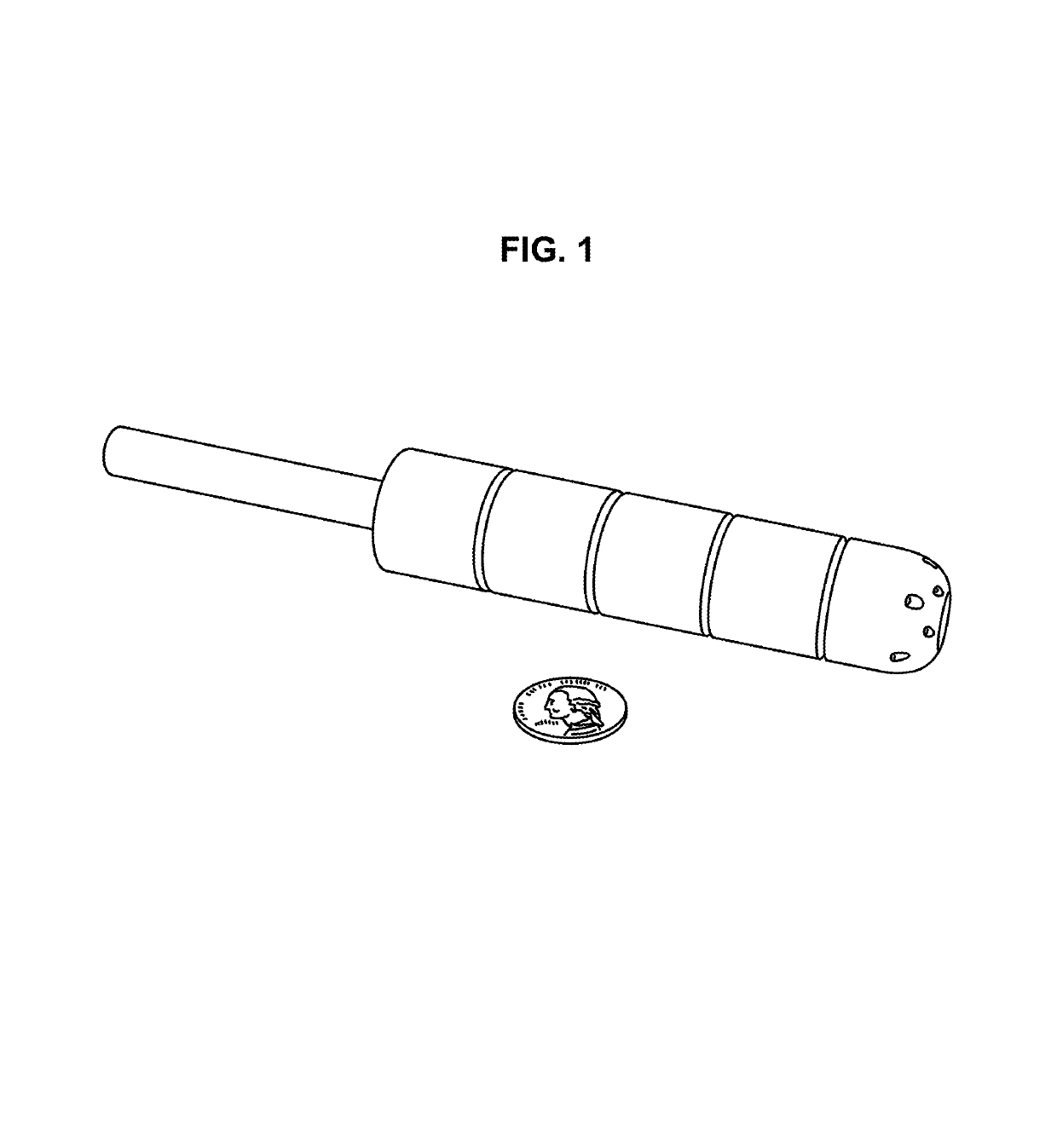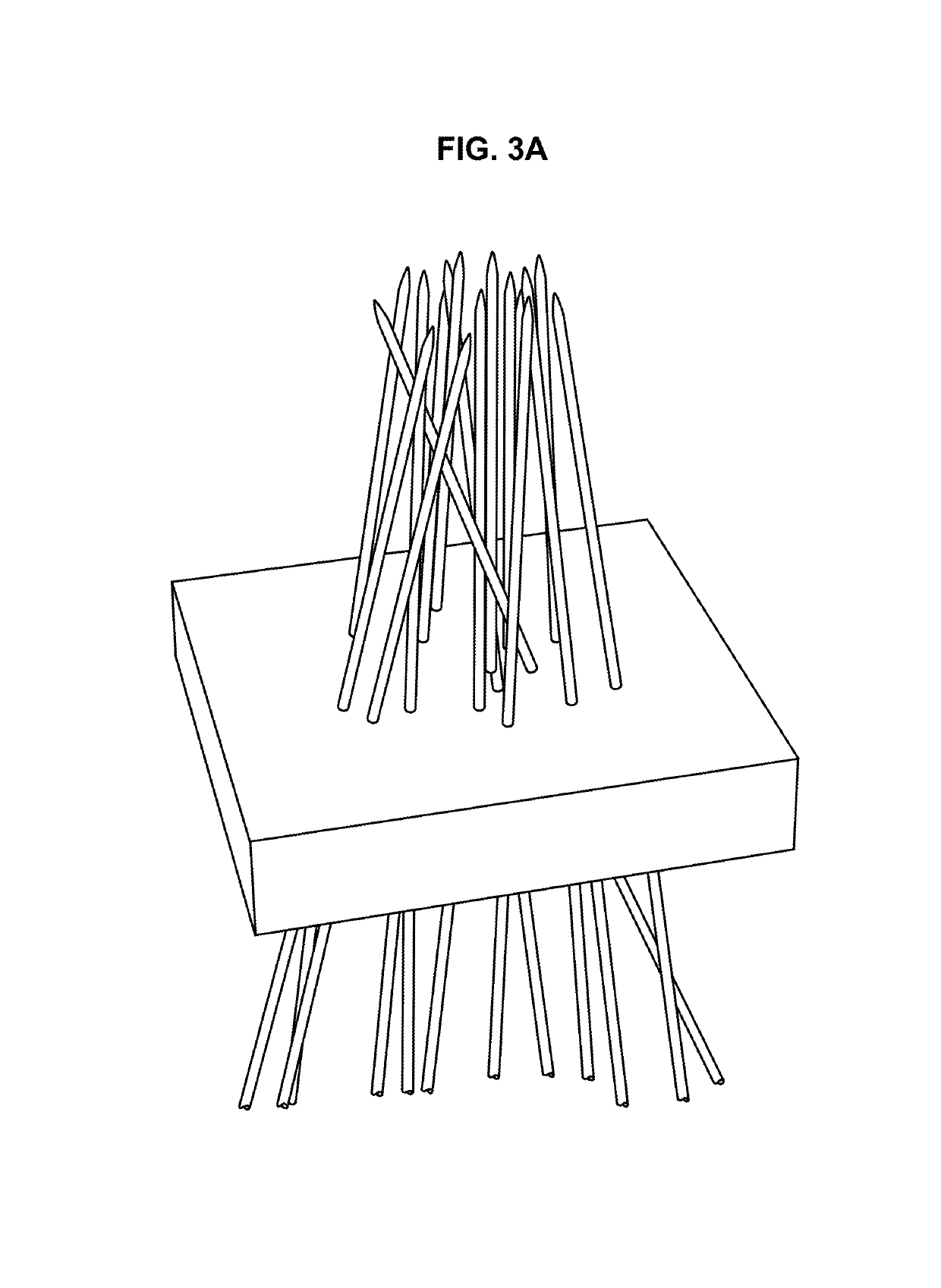Patient-specific temporary implants for accurately guiding local means of tumor control along patient-specific internal channels to treat cancer
a technology for cancer and local control, applied in the direction of catheters, ultrasonic/sonic/infrasonic image/data processing, therapy, etc., can solve the problems of limited radiation intensity, large amount of energy delivered, adverse side effects of use, etc., and achieve the effect of convenient design and printing
- Summary
- Abstract
- Description
- Claims
- Application Information
AI Technical Summary
Benefits of technology
Problems solved by technology
Method used
Image
Examples
example 1
[0137]Automation science has been applied to a number of healthcare applications to improve quality of treatment by improving repeatability and reliability. Huang et al. (Y. Y. Huang and K. H. Low, “Comprehensive planning of robotic therapy and assessment of task-oriented functions via improved {QFD} applicable to hand rehabilitation,” in Automation Science and Engineering (CASE), 2010 IEEE Conference on, pp. 252-257, IEEE, 2010) studied planning of robotic therapy and assessment of task-oriented functions for hand rehabilitation. Tervo et al. (K. Tervo, L. Palmroth, and H. Koivo, “Skill Evaluation of Human Operators in Partly Automated Mobile Working Machines,”IEEE Transactions on Automation Science and Engineering, 7:133-142, January 2010) and Solis et al. (J. Solis and A. Takanishi, “Towards enhancing the understanding of human motor learning,” in 2009 IEEE International Conference on Automation Science and Engineering, pp. 591-596, IEEE, August 2009) explored the use of automati...
example 2
This Example illustrates the 3D printing of an exemplary device of the invention . . . . The patient had cancerous tumors on cervix and vaginal wall.
I. Patient Scan and Physician Contouring
[0184]Anonymized patient data from the UCSF patient database was used for this study. The patient, Anon1, was scanned with CT-Scan and found to have cervical cancer. In the clinic, Anon1 was treated using a commercially available, non-customized (standard shaped) Interstitial Ring. In this case study an alternative approach is developed which replaces the Interstitial Ring with a custom implant that is contoured to patient anatomy and includes curved interior channels that can guide radioactive sources to deliver radiation closer to tumors and with more accuracy than with standard Interstitial Ring methods.
[0185]Anon1 had been scanned using a CT-scanner and anatomical images were generated as slices in axial, coronal, or sagittal planes. (The CT-Scanner usually takes one helical scan which is then...
example 3
Clinical Applications of Custom-Made Vaginal Cylinders Constructed Using 3D Printer
[0234]Purpose:
[0235]3D printing technology allows physicians to rapidly create highly customized devices for patients. This technology has already been adapted by various fields in medicine. We report a proof of concept and first clinical use of this technology for vaginal brachytherapy.
[0236]Introduction:
[0237]There are currently many medical applications of 3D printing in development, for example, medical modeling for maxillofacial surgical management (Chow, et al., Journal of Oral and Maxillofacial Surgery, 65(11):2260-2268, 2007; Anchieta, et al., Advanced Applications of Rapid Prototyping Technology in Modern Engineering. Rijeka, Croatia: InTech, pp. 153-72, 2011), bone reconstructions (Cohen, et al., Oral Surgery, Oral Medicine, Oral Pathology, Oral Radiology, and Endodontology, 108)(5):661-666, 2009; Schrank, et al., Journal of Biomechanical Engineering, 135(1):101011, 2013), and oral surgeries...
PUM
| Property | Measurement | Unit |
|---|---|---|
| temperature | aaaaa | aaaaa |
| δ | aaaaa | aaaaa |
| diameter | aaaaa | aaaaa |
Abstract
Description
Claims
Application Information
 Login to View More
Login to View More - R&D
- Intellectual Property
- Life Sciences
- Materials
- Tech Scout
- Unparalleled Data Quality
- Higher Quality Content
- 60% Fewer Hallucinations
Browse by: Latest US Patents, China's latest patents, Technical Efficacy Thesaurus, Application Domain, Technology Topic, Popular Technical Reports.
© 2025 PatSnap. All rights reserved.Legal|Privacy policy|Modern Slavery Act Transparency Statement|Sitemap|About US| Contact US: help@patsnap.com



